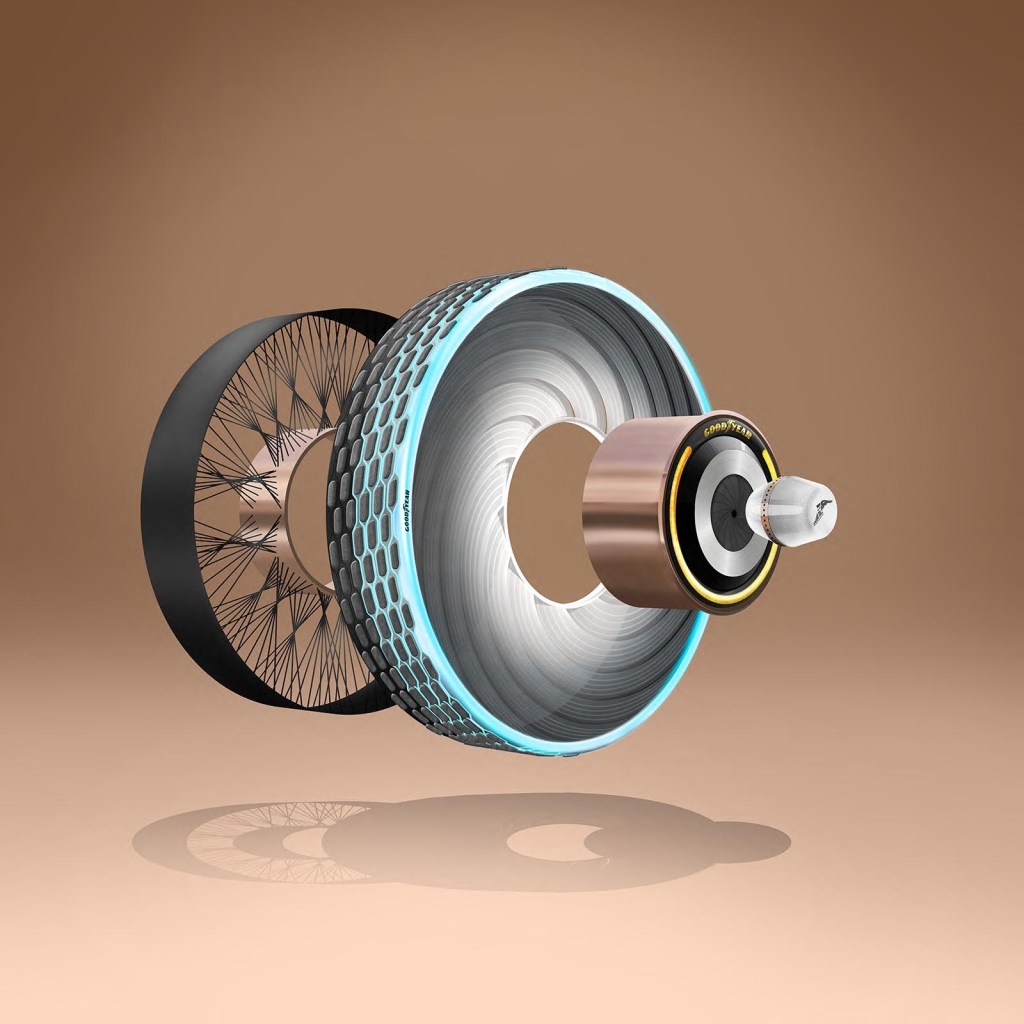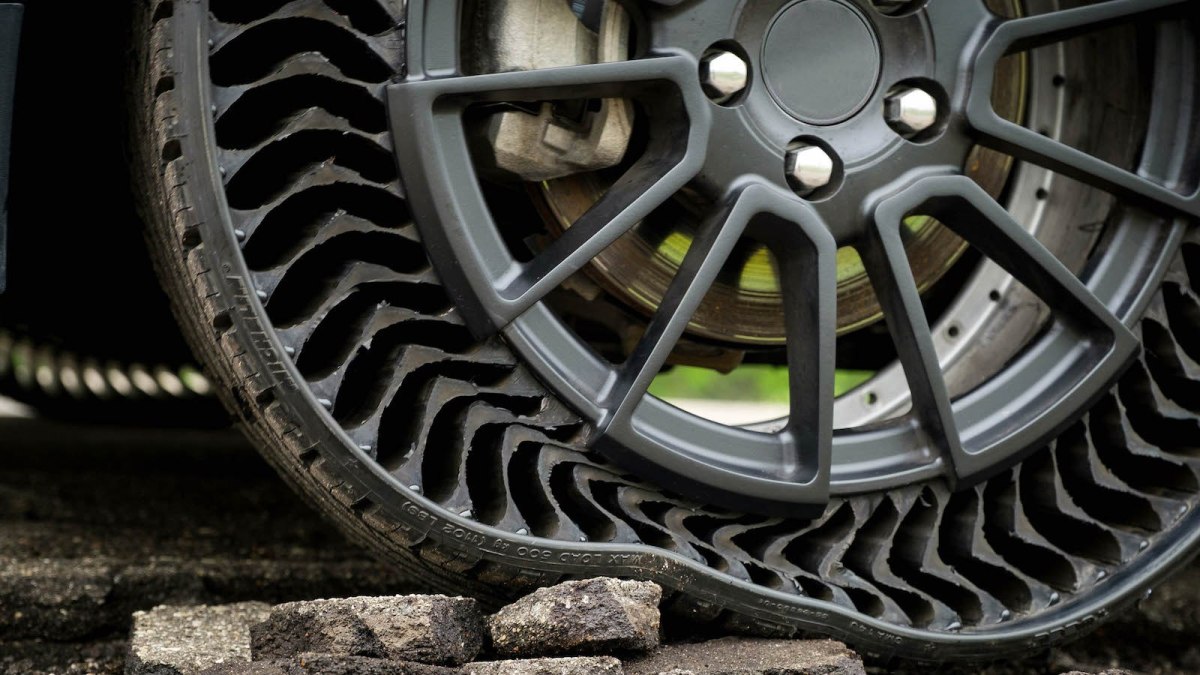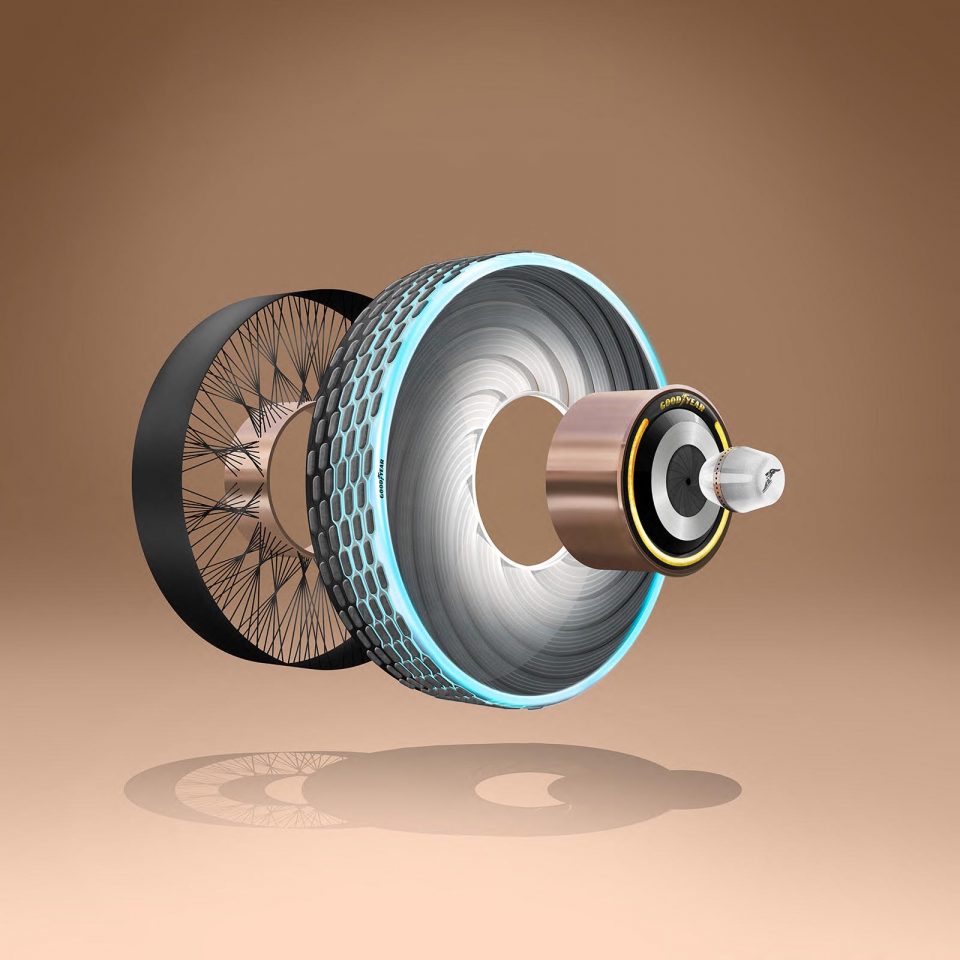Goodyear has rolled out a prototype tire, the reCharge, which could someday eliminate blow-outs and flats, and even replace its own worn treads.
- The reCharge is airless, eliminating blow-outs and flats.
- It can be fitted with capsules containing a silk-like liquid that can replace treads as they wear.
- The tire is designed to be completely biodegradable.
For anyone who has had their driver’s license for a while, blow-outs flats, and worn treads are a costly, and sometimes dangerous, fact of life. The Goodyear reCharge Concept is designed to address those and other problems.
For one thing, the prototype is meant to be completely airless, eliminating the risk of blow-outs and flats. And the company, one of the world’s largest tire manufacturers, thinks it’s stumbled upon a way to keep reCharge rolling long after conventional tires have to be scrapped.
The prototype can be fitted with reloadable capsules containing a fibrous liquid compound similar to spider silk, itself one of the strongest of natural materials. As the tire wears over time, the liquid flows out and replaces the worn tread.

An exploded view of the Goodyear reCharge. (Image: Goodyear)
It also allows the tire treads to adapt over time, Goodyear explaining that they change in response “to climatic circumstances, road conditions, or simply how you want to travel. Thanks to artificial intelligence a driver profile would be created around which the liquid compound would be customized, generating a compound blend tailored to each individual.”
The tread and underlying frame also would be designed to reduce rolling resistance, something that would improve fuel economy on conventional, gas-powered vehicles, while boosting the range of an EV.
“Goodyear wants the tire to be an even more powerful contributor to answering consumers’ specific mobility needs, said Mike Rytokoski, Vice-President and Chief Marketing Officer, Goodyear Europe, “It was with that ambition that we set out to create a concept tire primed for the future of personalized and convenient electric mobility.”
The tread material, according to Goodyear is “100 percent biodegrable,” addressing another serious problem with the rubber tires of today, millions of which land in dumps each year. There they provide a breeding ground for insects, often catch fire and can pollute both air and water supplies.

The Michelin Uptis Prototype being tested as part of a partnership with GM. (Photo: Steve Fecht/General Motors)
Goodyear isn’t the only manufacturer trying to address some of the problems with conventional tires. Last June, arch-rival Michelin announced a partnership with General Motors, the automaker now running extensive field tests on the French company’s Uptis, an airless tire concept that it hopes to have in production within a few years.
By the time that happens, tire manufacturers could start to replace rubber and some of the other, traditional materials long used in tires with sustainable – and biodegradable materials. One of the most promising comes from a plant that is the bane of gardeners worldwide: the dandelion.
“Most people view dandelions as a nuisance,” said a statement from Continental, but researchers at the German company “embrace the flowering weed as a key component to the future of tires.” The company is working on a replacement for rubber known as taraxa gum that could be in production “in five to 10 years.” The material can come from as many as 1,200 different types of plants, though researchers are leaning towards the Russian dandelion that takes less than a year to grow.
Over the coming years, tires are likely to get smarter, as well as more environmentally friendly. Tire pressure monitoring systems are already required by law and can help prevent blow-outs and flats. Even more advanced sensors are in development.
At the Consumer Electronics Show in Las Vegas last January, Bridgestone revealed a digital sensor built into a tire that can automatically detect wear and alert a driver – or a fleet manager. The system, a company official explained, could become particularly important once driverless vehicles take to the road in large numbers. With no operator onboard to monitor the vehicle, it will require a variety of sensors to avoid unexpected safety problems from cropping up.
WHY THIS MATTERS
It’s easy to ignore your car’s tires, but they are critical to its safe and efficient operation. Future tire technology, like that in the Goodyear reCharge Concept could make tires even safer, more fuel-efficient and environmentally friendly.


